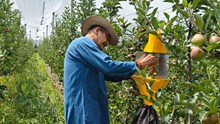
Legumes like beans and peas are a dietary staple worldwide, but they contain natural compounds known as “antinutrients” that can make digestion difficult. Now, scientists at the University of Saskatchewan (USask) have developed a promising new heating method that could make these plant-based proteins easier to digest and more environmentally efficient to process.
Antinutrients, such as tannins, lectins, phytic acid, and trypsin inhibitors, serve as the plants' natural defense system, protecting seeds from insects and animals. While heat can deactivate these compounds, conventional processing methods often fall short. Traditional ovens, for instance, tend to burn the outer layers of legumes before the heat penetrates the core, limiting effectiveness.
Researchers from USask’s Department of Chemical and Biological Engineering believe they have found a breakthrough alternative: radio frequency (RF) heating. Like microwaves, RF waves heat the water content inside the legumes directly, rather than warming the entire surface.
PhD student Tolen Moirangthem, part of the research team, explained that this internal heating method helps deactivate antinutrients effectively without damaging the outer structure of the seed. This method, called "selective heating," drastically reduces cooking time to just a few minutes and helps retain nutritional value that is often lost in longer heating processes.
As the internal water content heats up and turns to steam, it creates pressure that bursts internal pores within the legumes. This makes them more porous, which improves digestibility.
To validate their findings, the team used advanced imaging tools at the Canadian Light Source. Their analysis showed that RF-treated beans developed significantly more pores and experienced an 81% reduction in trypsin inhibitors, one of the most stubborn antinutrients.
The researchers say this innovation has major potential, particularly as animal protein remains expensive and less accessible in many regions. The technology offers a sustainable, scalable solution for processing plant-based proteins to meet the growing global demand for nutritious, affordable food.
(Source: University of Saskatchewan)















